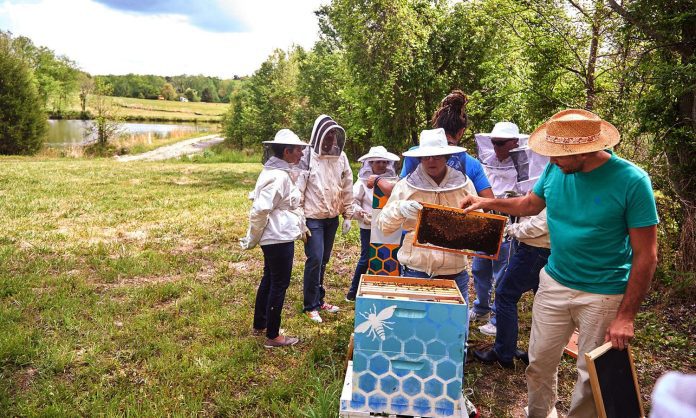World Honeybee Day is on the third Saturday in August every year, and this weekend (August 15) this year. North Carolina based analytics firm SAS Institute has used the occasion to draw attention to the way new IoT and AI technologies are helping to protect honey bees.
Honey bees are the world’s number-one food crop pollinator. About 35 percent of the world’s food crops depend on animal pollinators to reproduce, according to the United States Department of Agriculture. More than 3,500 species of native bees help increase crop yields, it says.
They are under threat, as we know. SAS, referencing the current coronavirus pandemic, calls the challenge to save and protect honey bees as “an even older ‘pandemic’” which “threatens the world’s food supply”. But analytics-based technologies, of the sort it produces, are at work to save them, it says.
It presents a number of ways to track hive health with IoT and AI technologies, with streaming analytics deployed to interpret hive data flowing from embedded sensors to help beekeepers understand which units need help. Hive data is sent to the cloud to allow for the continuous measurement of four specific metrics, it notes.
These are as follow, in its own words.
1 | Weight
“A connected scale sensor tells beekeepers if the hive is producing honey and gaining weight – a sign of a healthy bee activity. If the scale indicates weight loss in one hive compared to its neighbour, beekeepers can intervene.”
2 | Temperature / humidity
“An ideal climate inside the hive creates baby bees and keeps the queen warm enough to survive the winter. Honeybees regulate hive temperature and humidity by moving, flapping and clustering. Internal sensors collect temperature and humidity data then analyse it to alert beekeepers about concerning fluctuations.”
3 | Acoustics
“The hum of honeybees buzzing indicates health, stress, swarming, and the condition of the queen. SAS hives monitor audio data continuously and use machine learning models to listen for anomalies. These audio clips help illustrate the difference between a healthy hive and an endangered hive.”
4 | Flight
“Bees flying in and out of a hive indicates foraging activity, a sign the hive is healthy. Applying computer vision technology to the bees’ flight patterns helps beekeepers understand when the hive is happy or in trouble.”
Sarah Myers, the company’s marketing manager for ‘agtech’, knows the bee-keeping game better than most, she says.
“Our passion for innovation and sustainability helped us find technology solutions to better understand the health of beehives. I’m an avid beekeeper, and it’s exciting to work with a group of data scientists who want find new ways to support this critical global effort.”
SAS has issued a report on how IoT technologies are protecting honey bees, available here.

